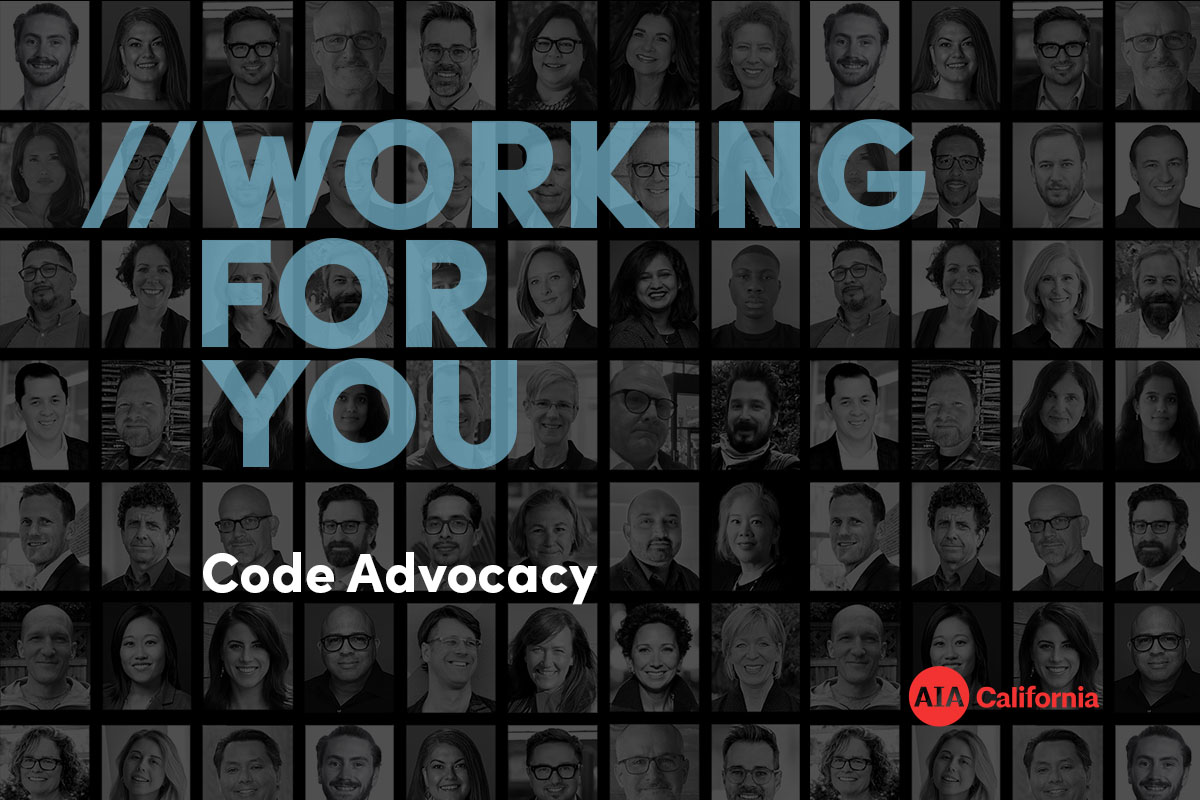
Greetings from the AIA California Office,
A frequent comment I receive from members is “why isn’t AIA doing something to make my work easier?” That’s a tall order and if the design and delivery of architecture was done in a vacuum, that would surely be easier to achieve. However, we live in a world of increasing complexity, rate of change, and interconnectedness. Most of the work of architects is subject to numerous external regulations and codes which originate from sources far removed from architectural practice.
For example, California has, for years, adopted goals and policies that mandate carbon reductions, so as these become embedded into codes, it is imperative that we are at the table to ensure considerations of architectural practice are included in the ever-changing regulatory landscape.
The addition of embodied carbon benchmarks in our building code was going to happen, regardless of who the players were.
What’s different this time is that AIA California was in the room which ensured that new code was tailored to best support architects be efficient in attaining sustainability goals and realizing commissions.
Throughout the process, we guided and shaped the way the standards were developed. We helped manage a diverse team of professionals and organizations, and as a result we advanced code changes that supported the work of architects, created option choices best suited to individual commissions, and, through this, made architects’ work more efficient.
We now have a very flexible framework with three optional compliance paths for design professionals to choose from.
This highly flexible approach is the direct result of AIA California’s engagement in the process; if we were not engaged, we could have ended up with a code that required every project to be modeled – just as we have with the current energy code – or for more information on these optional compliance paths, click here.
To put this into another perspective: consider California’s energy code and how it has evolved. While it is undoubtedly the most advanced such code in the country, it takes thousands of pages to describe it, leading to an environment of specialist consultants to navigate it effectively. And yet, as professionals, architects bear responsibility for compliance. While it’s “scientifically correct”, from a practical standpoint it’s a spiderweb of highly technical information that takes a full-time job to keep up with!
Many practitioners in California believe that as code has moved to more fully consider “carbon accounting” we are off to a much better start and on a track that is thoughtful, usable and good for BOTH the environment and business (including architecture firms!) And as the code landscape continues to evolve, AIA California will be your advocate for both streamlining and efficiency so you can provide your clients with higher value for your work. While it’s a heavy lift between competing interests, the many stakeholders, and the state bureaucracy, this is just one more way AIA California is working for you.

Nicki
Starting in 2019 AIA CA began focused efforts in changing building codes in support of our commitments to climate action. Code change is a long process, that involves lots of time and effort. Our first major ‘code win’ occurred in June 2023 with the California Building Standards Commission vote to approve adding Chapters 6, 7, 8, 9, 10, 11 and 13 of the International Existing Building Code (IEBC) to California’s Title 24 Part 10 Existing Building Code (CEBC). When this mid-cycle update is effective July 2024, design professionals will have significant new tools for their optional use in navigating approvals for conversion of commercial buildings to residential, as well as a wide variety of other project types.
When existing building infrastructure is retrofitted and reused, it brings significant climate action benefits through embodied carbon reductions. These projects can also boost our housing supply, while advancing urban revitalization. The adoption of these Chapters was the culmination of a focused multi-year initiative led by Michael Malinowski, FAIA, to harness the California Building Code and architects’ design thinking to address our state’s most pressing challenges.
Progress on another major initiative – to bring embodied carbon controls for large projects to CALGreen continues to advance, with further actions expected later in 2023.
These efforts demonstrate AIA California as a proactive, leading voice in supporting the work of architects through code and regulatory change. As a profession, our actions are making a significant difference in California’s complex code and regulatory environment, as we advocate for sensible, climate-friendly and sustainable state building codes and policies that support life safety while at the same time advancing broad social objectives. In this process we work with a wide range of stakeholder agencies, organizations, and subject matter experts – a network that is constantly expanding and becoming more impactful.
These shifts bring reality to the vision set out by the 2018 AIA Blue Ribbon Panel for Codes and Standards – a new, bold role for building codes and standards as valuable design tools for a resource-constrained and climate-challenged future. This broader view maintains the traditional elements of life safety, fire protection, and structural and other system integrity while at the same time addressing our deteriorating climate and need for revitalization of our cities and economic opportunities and housing for all our citizens.